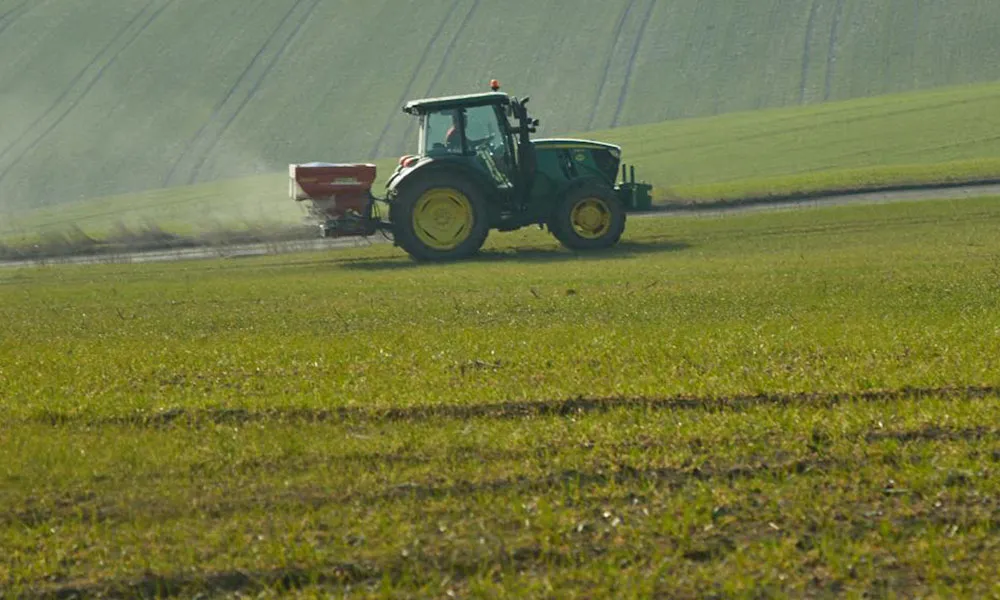
Confusion over fertiliser allowances
When it comes to calculating fertiliser allowances, confusion still reigns across the country. A range of restrictive new regulations on the purchase of chemical nutrients and their application on farmland is panicking a lot of Irish farmers. Most of the men I speak to are not actually worried about the prospect of having to reduce their fertiliser output. The bigger concern is that they will unwittingly put out more than the new limits allow for and be penalised for it.
As a result, some farmers are simply staying away from compound fertilisers altogether. This is all well and good, but soil fertility is likely to suffer in the long term. The state of confusion is not the fault of the farmers themselves. It really reflects a failure of communication on the part of the state that needs to be remedied as soon as possible.
What you need to do
Under the new regulations, any farmer stocked above 130kg N per hectare must have soil samples taken. If you don’t take soil samples, it will be assumed that you are above the limit (Index 4) and you are therefore not permitted to spread any chemical or imported P. P compound fertilisers, such as 10-10-20 are also prohibited in this circumstance. The same applies to tillage farmers who cannot spread fertiliser or imported organic manures without first attaining a soil sample.
In other words, you must get a soil sample to justify using fertiliser unless you are already stocked below 130kg N per hectare.
Making calculations
The permitted amount of N fertiliser is calculated according to stocking density, while permitted P allowance relates to soil index and level of feed concentrate usage. You can access your P index in your farm’s soil test results. Teagasc advises that your stocking rate is assessed as the total amount of nitrogen in kilos excreted by grazing stock, averaged over the net grassland area (grazing and silage area).
The maximum amount of chemical N that you are allowed to apply is established in the table shown below:
|
Grassland stocking rate (kg N/Ha)
|
Maximum chemical N permitted (kg N/Ha)
|
|
<85
|
90 |
|
86-130
|
114 |
|
131-170
|
185 |
|
171-210
|
240 |
|
>210
|
212 |
|
Source: Teagasc |
|
Don’t forget ACRES
To make sure that you are within the limits for N, you should consult with your agricultural advisor. There may be farm-specific allowances that you can avail of, depending on your situation. However, it is also important to remember that ACRES scheme requirements may have reduced your fertiliser allowance. This is the case with the extensive grassland measure, for example. Under ACRES, riparian zones have no allowance for N.
P rates
Annual maximum phosphorous rates for grassland (by soil phosphorus index number) is set out in the table below. It should be noted that soil with 20% or more organic matter is limited to the index 3 rate:
|
Grassland stocking rate (kg/ha/year) |
Index 1 |
Index 2 |
Index 3 |
Index 4 |
|
Less than 85 |
27 |
17 |
7 |
0 |
|
86-130 |
30 |
20 |
10 |
0 |
|
131-170 |
33 |
23 |
13 |
0 |
|
171-210 |
36 |
26 |
16 |
0 |
|
211-250 |
39 |
29 |
19 |
0 |
|
Greater than 250 |
39 |
29 |
19 |
0 |
|
*Courtesy of the Department of Agriculture, Food and the Marine |
||||
It is recommended that leftover slurry should always be spread on those fields with the lowest P and K status. Chemical fertiliser should be purchased thereafter, if there is still an issue with soil indexes. Lime should be applied to address issues with soil pH.
In conclusion
All of this can be very confusing. If you don’t understand it all, know that you are not alone. Your agricultural advisors must also have a part to play in ensuring that you are compliant with reuglations, so don’t hesitate to contact them on this.










